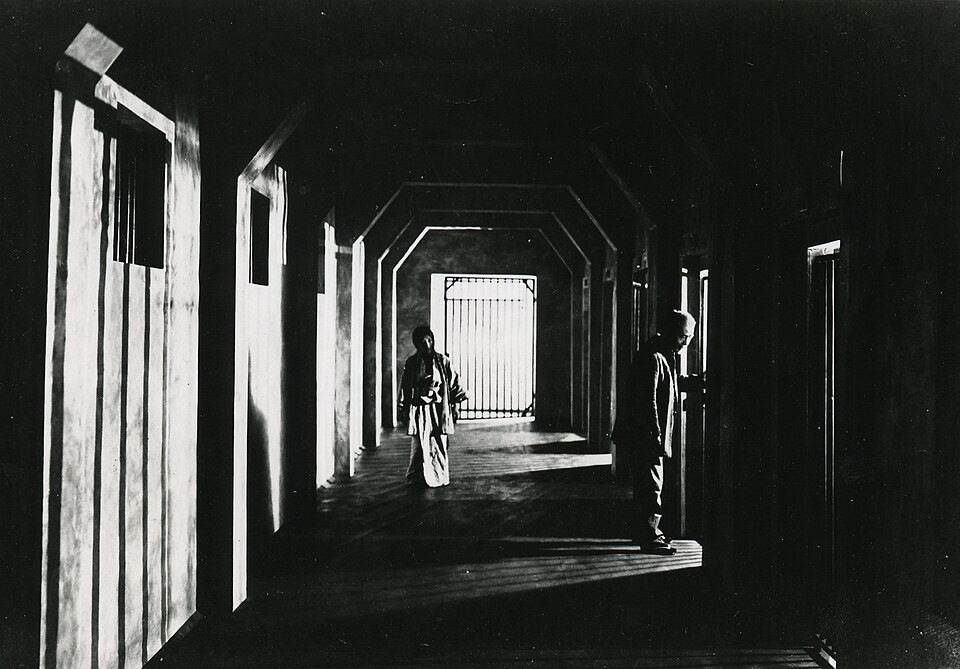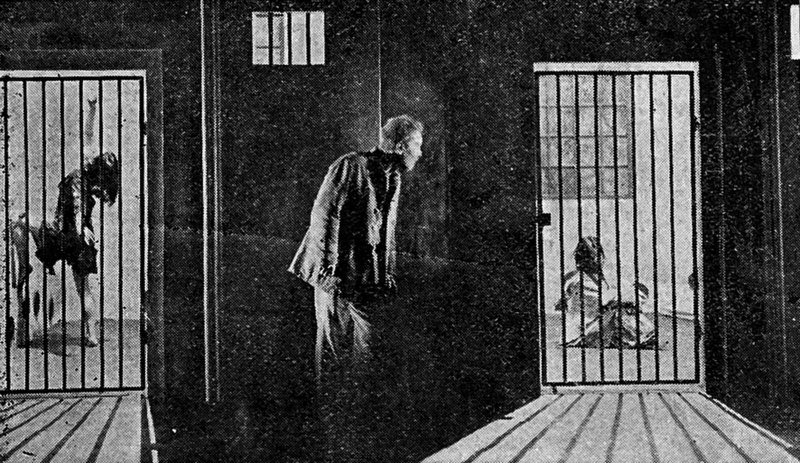
Kurutta ippeji (“A page of madness”)
Japan, 1926
Director: Teinosuke Kinugasa
Script: Yasunari Kawabata
Cast: Masao Inoue, Yoshie Nakagawa, Ayako Iijima
Plot
We are shown several people in an insane asylum. A young woman dances frantically until she is exhausted (she apparently thinks she is a dancer performing some ritual in a temple). Outside a torrential rain is falling. Other inmates are in their cells, while a warden watches over them.
The guard pays special attention to the inmate in cell 25. For it is his wife. The warden’s wife went insane when she tried to kill their newborn daughter years ago. She has been in the asylum ever since.
When the girl is an adult, she goes to visit her parents at the center where her mother is hospitalized and her father works. The girl wants to announce her engagement. In the meantime, the other patients try to riot…
The employee of the asylum will try to take advantage of the situation to free his wife.

Comment
This Japanese silent film draws directly from German expressionism. It is particularly visual, and contains sequences rather quickly assembled for the time, like the girl’s dance at the beginning.
The frenetic pace seeks to emphasize the atmosphere of the sanatorium. The camerawork also tries to provoke a sense of claustrophobia in the viewer. On several occasions there are distorted images, which can almost be described as hallucinogenic or lysergic. The director includes experimental resources typical of avant-garde trends of the time, such as surrealism.
The film, especially in the first part of its footage, is reminiscent of a report or documentary, in which the characters that we will see later on are introduced as the plot progresses.
In terms of structure, there is a proliferation of flashbacks, with memories and imaginations of the protagonists, which are inserted into the story.
When the film was released, a “benshi” (traditional Japanese storyteller) narrated what appeared on screen. To this was also added the usual musical accompaniment, as was usually done in the silent film performances of the time. In this case, without the aforementioned narrator (which today’s viewers do not have), the feature film is somewhat difficult to follow (there are no subtitles or overlapping dialogue scenes).
This film is considered to have been lost for over 40 years, until the aging director Kinugasa found a copy by chance in his garden in the 1970s. The copy, however, is partial, missing scenes.
Kinugasa (who with over 100 films as a director was a very prolific filmmaker) was based on a story by acclaimed writer Yasunari Kawabata, who decades later would be awarded the Nobel Prize for literature.
Get A page of madness HERE!
(This is an affiliate link. I may earn a commission if you purchase through these link, at no extra cost to you. As an Amazon Associate, I earn from qualifying purchases.)
